
Ontario’s public service heads back to the office, meaning more traffic and emissions
For 15 years and counting, my commute from Mississauga to Toronto has been mired by...
Set against a backdrop of tree-clad mountains, the Kitwanga sawmill yard bustles with activity. Flatbed trucks are loaded with lumber, yellow backhoes scoop towering piles of wood chips and forklifts chime rhythmic warnings while reversing around the rutted tracks.
Inside, wafts of oil and grease mingle with the smell of sawdust. It’s noisy and busy — the mill workers barely glance up as co-owner Dennis Smith leads Naxginkw Tara Marsden and me through a maze of steel scaffolding. Huge logs thunder along clattering conveyor belts and saw blades the size of car tires howl as they slice through the wood.
Marsden, who is from Wilp Gamlakyeltxw of the Gitanyow Huwilp, arranged the tour. More than half of the trees processed in Kitwanga are harvested on Gitanyow lax’yip (territory) through a partnership with Hereditary Chiefs.
Last fall, the chiefs celebrated the 10-year anniversary of a groundbreaking land-use plan developed in partnership with the province. The plan protects ecosystem and cultural values, and ensures more than half of the lax’yip will never be touched by industrial development. In doing so, it reduces land-based conflicts — any companies eyeing Gitanyow resources know from the get-go where they can and can’t operate. It also sets the stage for partnerships like the one with Smith’s family-owned northwest B.C. mill, which employs around 75 per cent First Nations workers.
“Not only do we come here today to celebrate 10 years — a decade — of implementing what people call the land-use plan, it’s about recognition of who we are as Gitxsan, Gitanyow people, that we are hereditary people who have had a system for thousands of years,” Simogyet (chief) Malii Glen Williams said at a press conference in late September.
The Gitanyow land-use plan is an example of Indigenous and settler governments working together in a way that reflects the principles of the United Nations Declaration on the Rights of Indigenous Peoples, one that is capturing the attention of nations across the country. Underpinning every aspect of the plan and how it plays out on the land is the concept of Gwelx ye’enst — the rights and responsibilities to sustainably pass on the land from one generation to the next.
“The chiefs wanted something that was both in our ayookw (law) and in the Crown laws,” Marsden says, adding it provides a means to avoid conflict over land and water. “Not that it resolves every single one of them, but it’s a huge step forward.”
It’s also a rare success story for B.C.’s forestry industry, which is reeling from a spate of mill closures and layoffs. In January, after news that Canfor’s Prince George pulp mill would be closing its doors permanently, the B.C. government announced it will invest up to $90 million to support jobs in the sector.
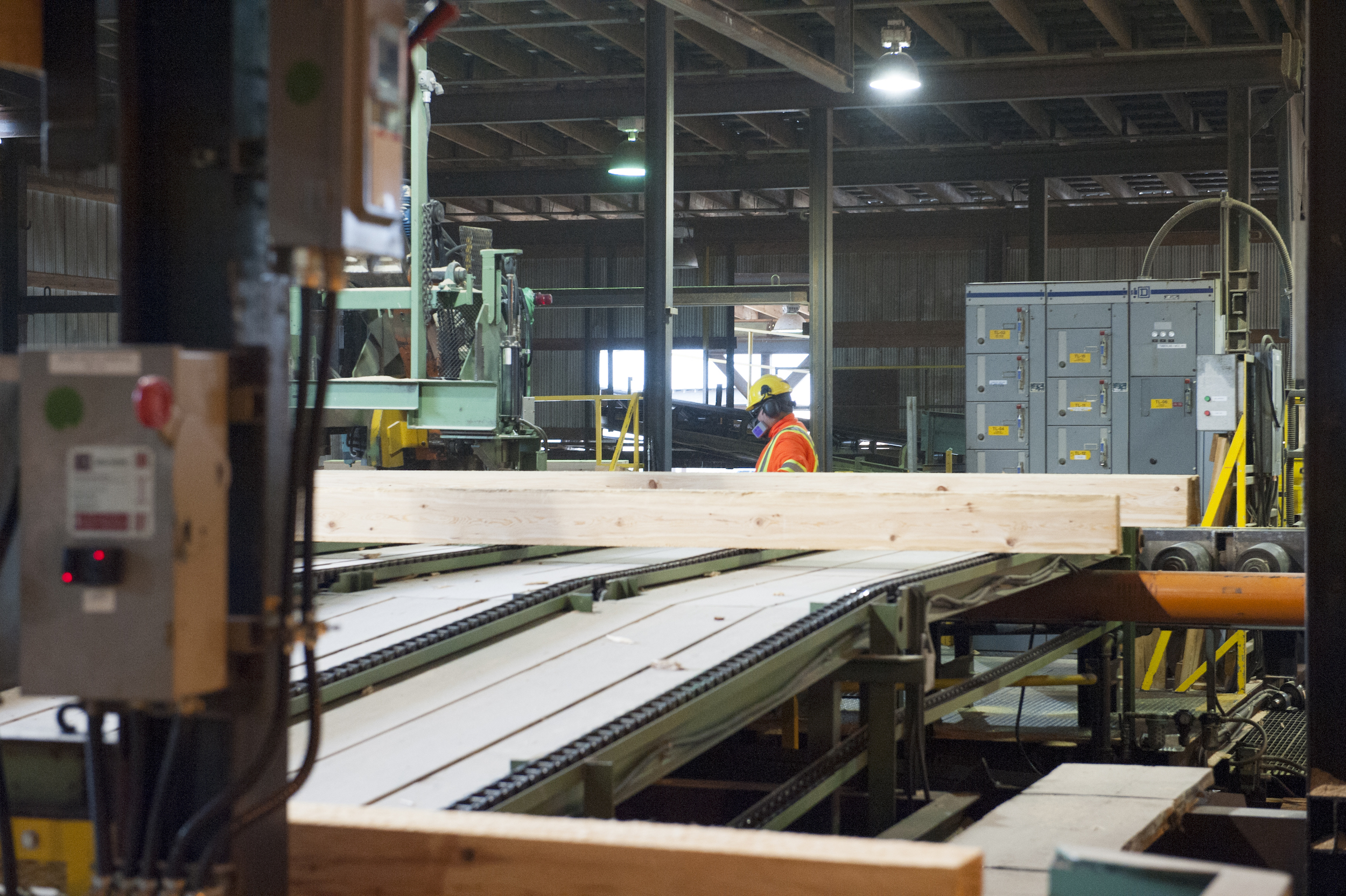
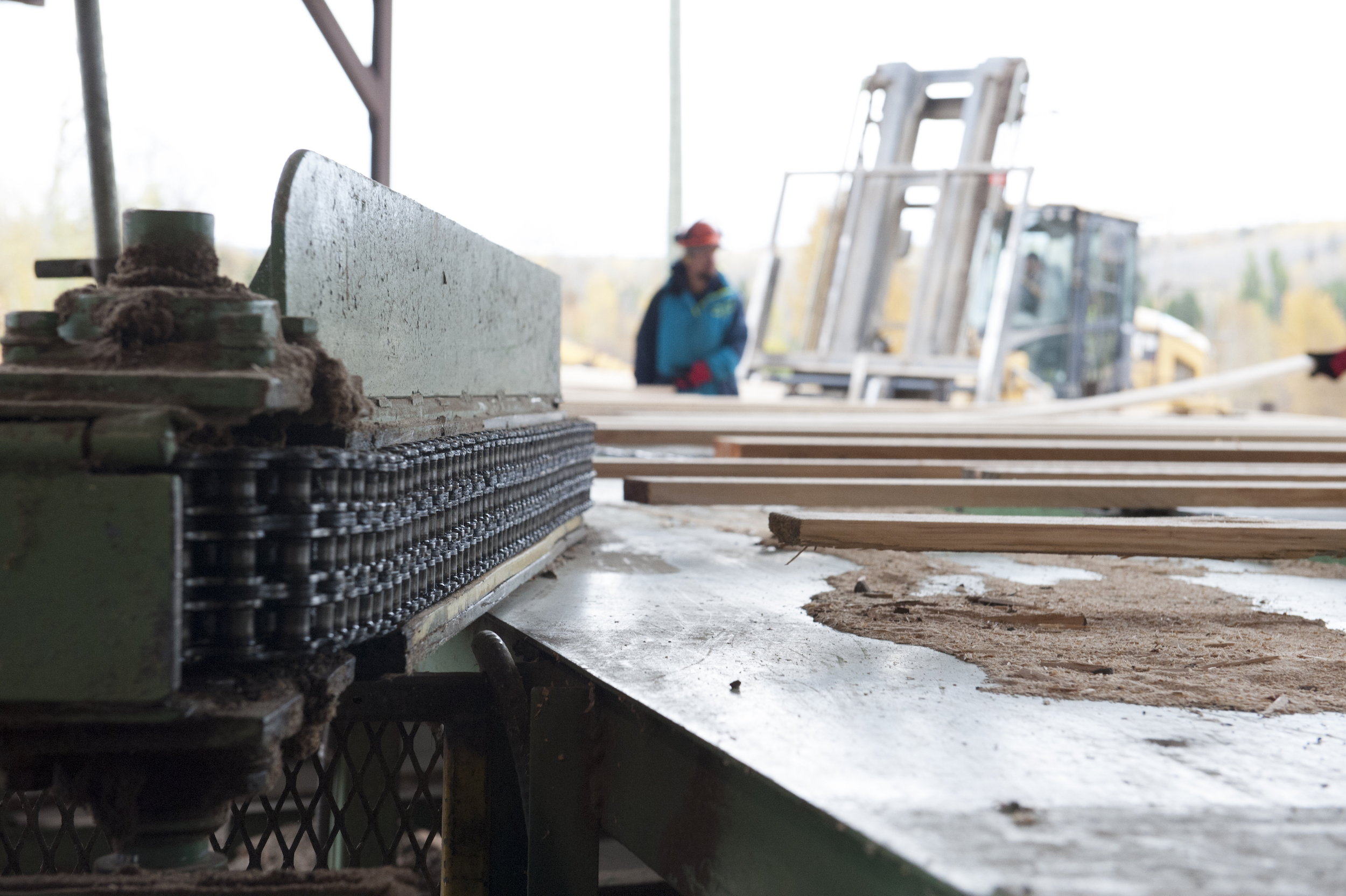
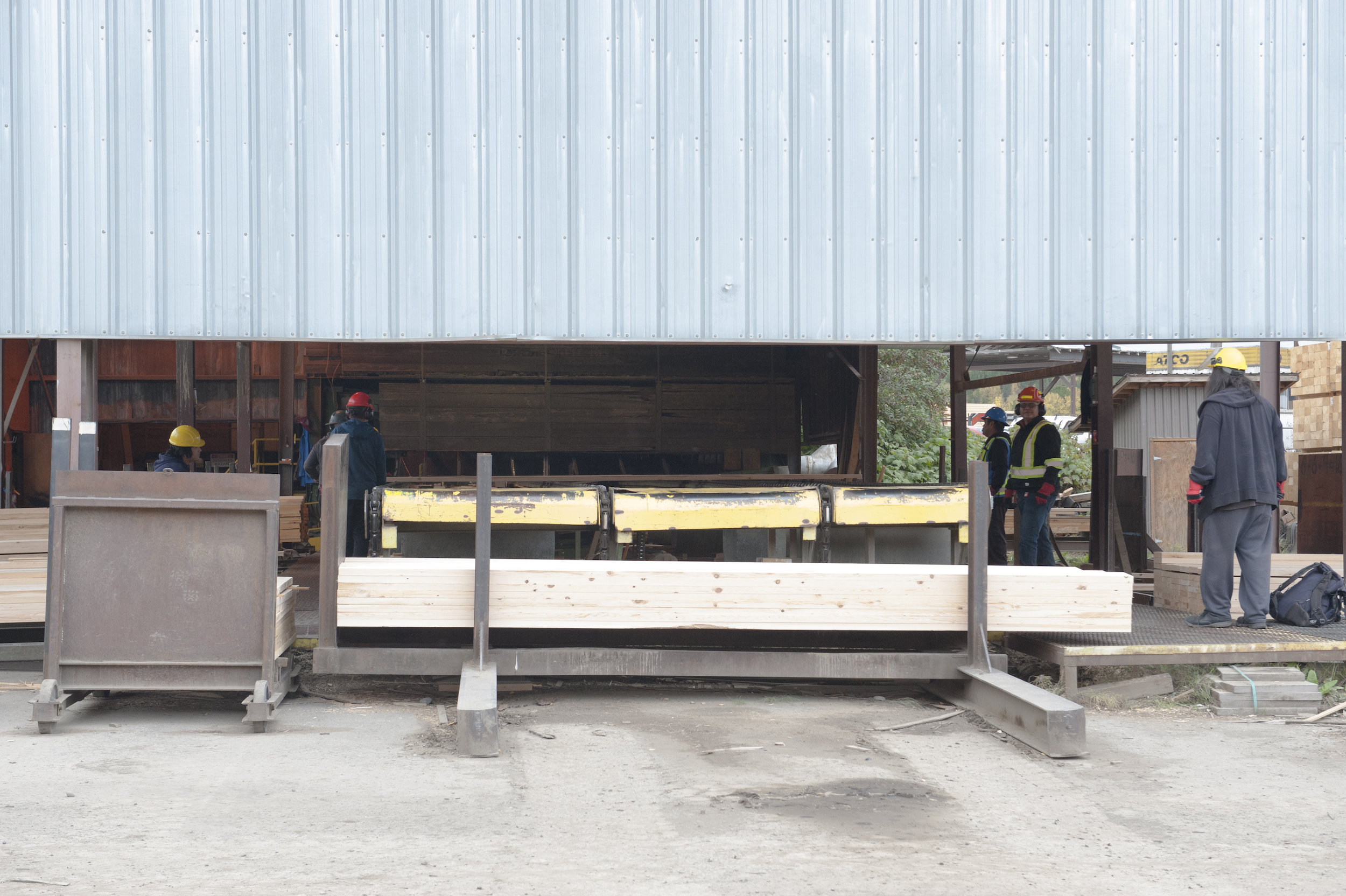
As the province wrestles with a transition many say has been decades in the making, large milling operations and logging companies are left with an unsustainable business model. Years of logging too much, too fast, and focusing on an export market led to an economic environment that can’t adapt, according to critics. The impacts are felt both on the land and in households.
“The whole premise behind a lot of these [forest] tenures is that they overharvest when markets are good, and then they go quiet,” Smith says of larger-scale operations. “When you’re talking about local employment, you can’t have that kind of program. It doesn’t work because people need to live more than one year out of five.”
Before the plan was signed in 2012, the lax’yip was a legal battleground.
Like many First Nations in B.C., Gitanyow was regularly embroiled in disputes over forestry operations. Frustrated by a lack of progress during negotiations with the province — while large-scale logging continued without Free, Prior and Informed Consent — the nation took the fight to the B.C. Supreme Court.
“We had three forestry court cases that led to the land-use plan,” Marsden notes. The nation argued B.C. had failed to adequately consult on the transfer and approval of forest licences and was ignoring Gitanyow Rights and Title.
Since the plan was implemented, the nation hasn’t returned to court.
It wasn’t easy to reach consensus with the province, which has largely favoured the interests of industry for over a century. As Gitanyow chiefs and B.C. worked together to develop the plan, there was significant pushback from the government, according to Marsden.
“The argument against it being so detailed was that it was going to kill industry.”
The Gitanyow didn’t give up. For 10 years, the nation pushed against the pushback and maintained the only way forward was for B.C. to respect and reconcile with ayookw. Now, a decade later, life is a lot easier for logging companies on the lax’yip.
“We have multiple licencees who are not only not dying, they’re thriving,” Marsden says.
Greg DeMilles, with Skeena Sawmills in Terrace, B.C., says his company’s partnership with Gitanyow makes for an ideal business model in what he describes as a challenging region with “tough terrain and even tougher economics.”
“We know where we can operate, how we will operate and when logs will arrive at our mill.”
Smith says working with the Gitanyow chiefs helps the Kitwanga mill keep its doors open — unlike many mills across the northwest, which have been cutting production, with corresponding layoffs, citing market conditions and a lack of trees.
In a relatively quiet section of the mill, he lights up like a proud parent listing off the achievements of his child — except his baby is a new $5 million production line. The line, he says, cuts lumber almost exclusively from wood that would’ve otherwise been burned.
“If every hectare that you’re harvesting you’re utilizing everything that’s there, you potentially don’t need as big of a wood licence to start with,” he says.
“It’s very different than the other companies that are mostly exporting raw logs, which is exactly what our chiefs didn’t want,” Marsden adds. “Our chiefs wanted to see local production, local job creation.”
At its heart, the plan is a prescription for how, where and when industrial activities can take place — while preserving values such as biodiversity, water and wildlife. Off limit areas, such as the newly created Wilp Wii Litsxw Meziadin Indigenous Protected Area, are clearly delineated. The plan includes detailed mapping of habitat for mountain goat, moose, goshawk and grizzly across the entire lax’yip. This level of detail is a departure from previous government attempts to develop landscape-level planning in B.C.
“Gitanyow’s [plan] is much more detailed, much more prescriptive in terms of targets and measures and what you can do in different areas,” Marsden explains. “The outcome is that it’s really, really clear.”
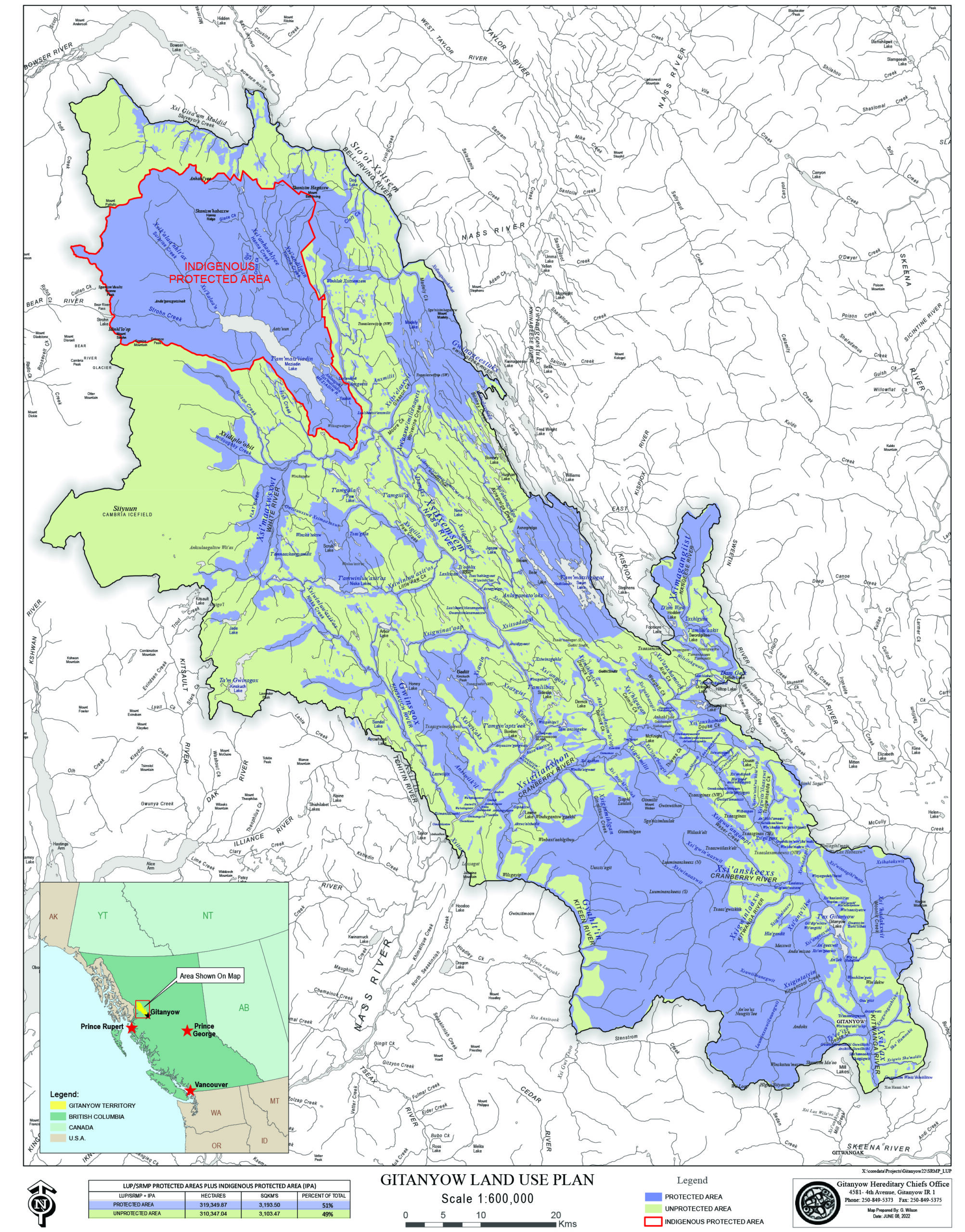
In October, Josie Osborne, then minister of Water, Land and Resource Stewardship, described the agreement as forward thinking and proactive.
“It’s just as important to identify where you can go as it is where you can’t go,” she said. “The work that Gitanyow has done here is showing and working with industry, in particular, to say, here’s why, and building that shared understanding so that they can coexist.”
Marsden agrees and says it provides a way out of a seemingly endless cycle of conflict between settler and Indigenous governments.
“If people, especially government, are constantly going from one crisis to another, then we’re all going to be left with a lot more environmental crises and a lot more challenges on the land,” she says.
Osborne, who is now the minister in charge of energy and mines, says the Gitanyow plan is an example of a shift in B.C.’s approach to working with First Nations.
“One of the key differences is really recognizing the rights of Indigenous people of stewardship of the lands and that intimate deep knowledge,” she says. “When we take the time to build relationships — the trust and the respect — we really do things in a better way. And that’s ultimately what this land-use plan is about.”
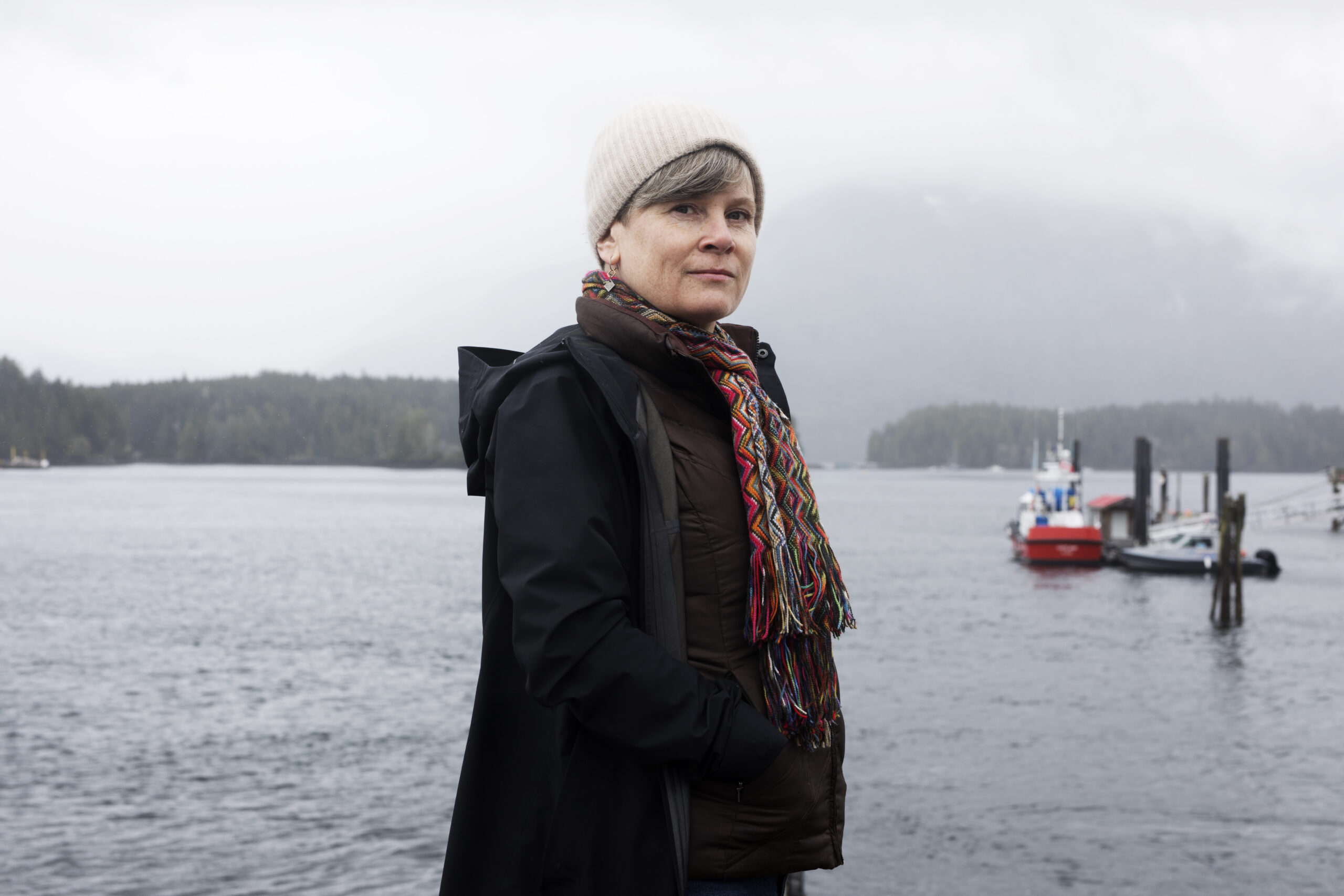
On the drive out to visit some cutblocks, Marsden pulls off the highway after spotting a dead moose beside the road. She snaps a few pictures and records its location, explaining she’ll later send them to the Gitanyow Guardians, who monitor the lax’yip. Keeping an eye on wildlife populations is an important part of the guardians’ role. Preserving habitat is also an integral part of the land-use plan.
“There is harvest allowed in moose winter range, but the roads have to be deactivated within a year and then we have [tree-planting] prescriptions to ensure there’s sufficient browse and not just mono-crop plantations and things that aren’t going to be good for moose,” Marsden says.
As we drive slowly up a muddy logging road into a recently harvested area, she says not everyone is happy with the forestry operations on the lax’yip.
“People aren’t going to like seeing this,” she admits, nodding at towering slash piles — the knotted, gnarled or otherwise unusable parts of of trees and stumps left over after logging.
While the Kitwanga mill is producing a lot of lumber from previously wasted material, what’s in these piles can only be used for pulp or pellets — and getting slash out of the bush is expensive.
“There really shouldn’t be any waste left,” Smith says, but notes the economics just don’t add up. “When we get to that point, I think that’ll be a good day.”
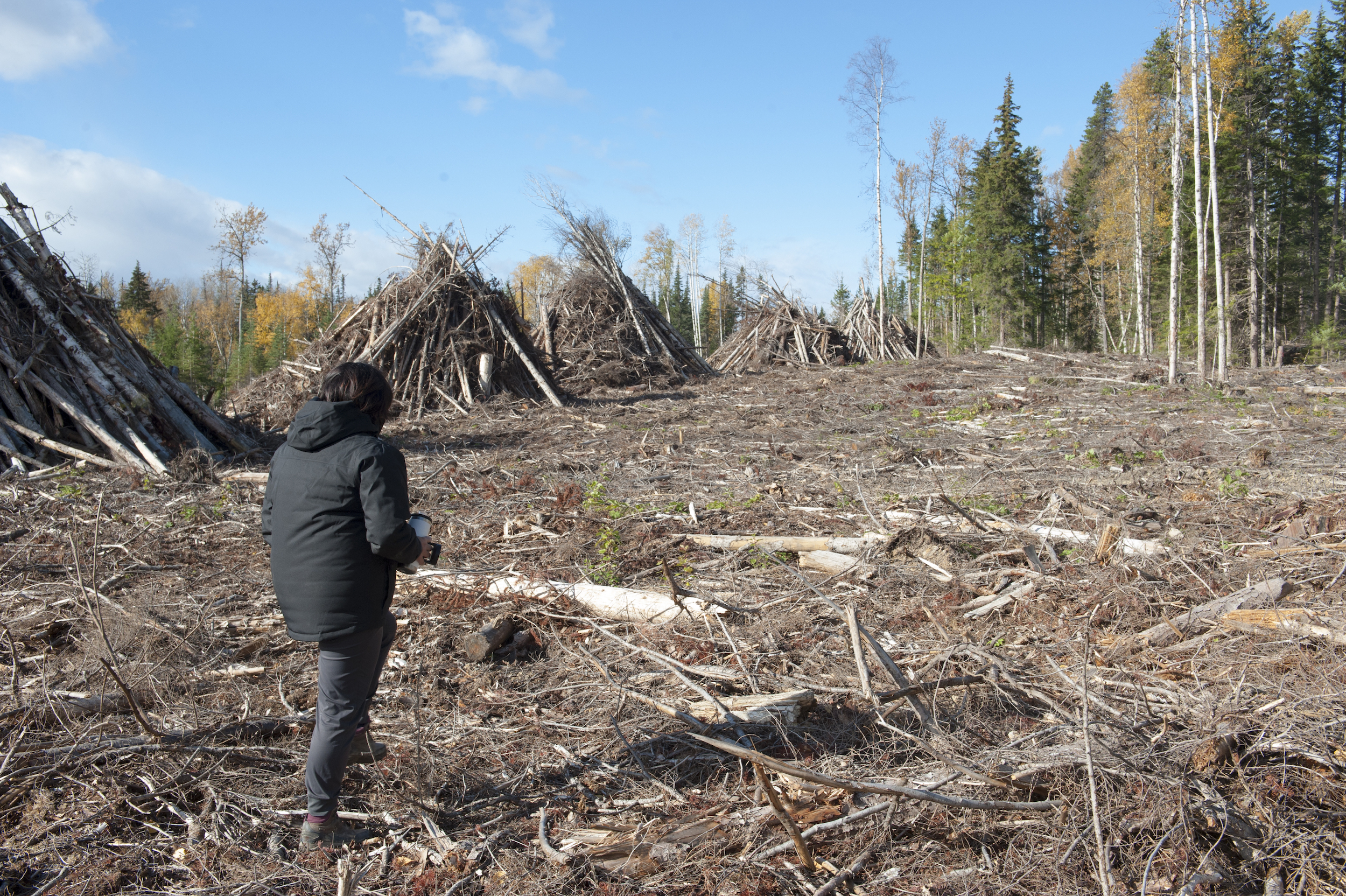
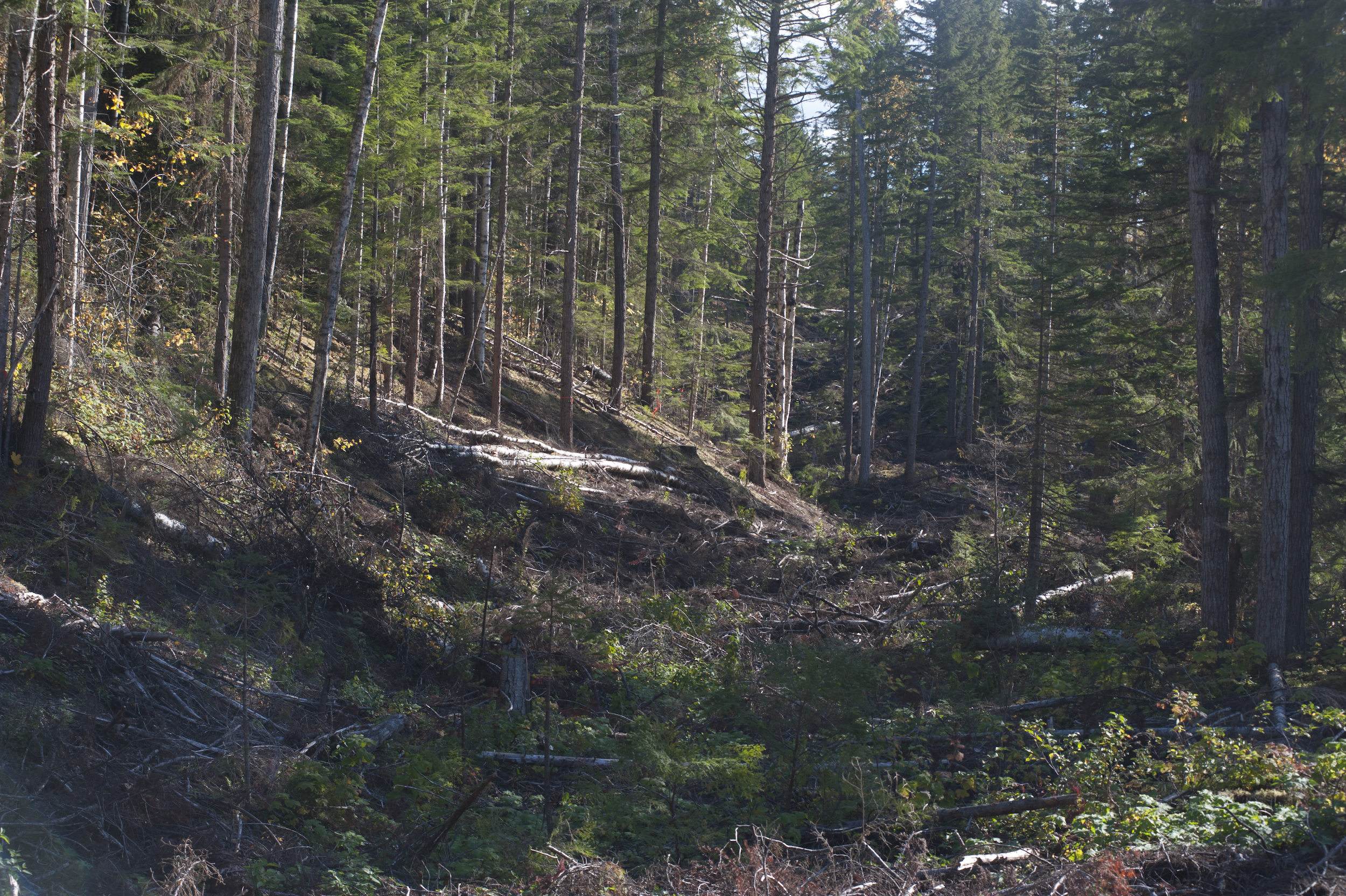
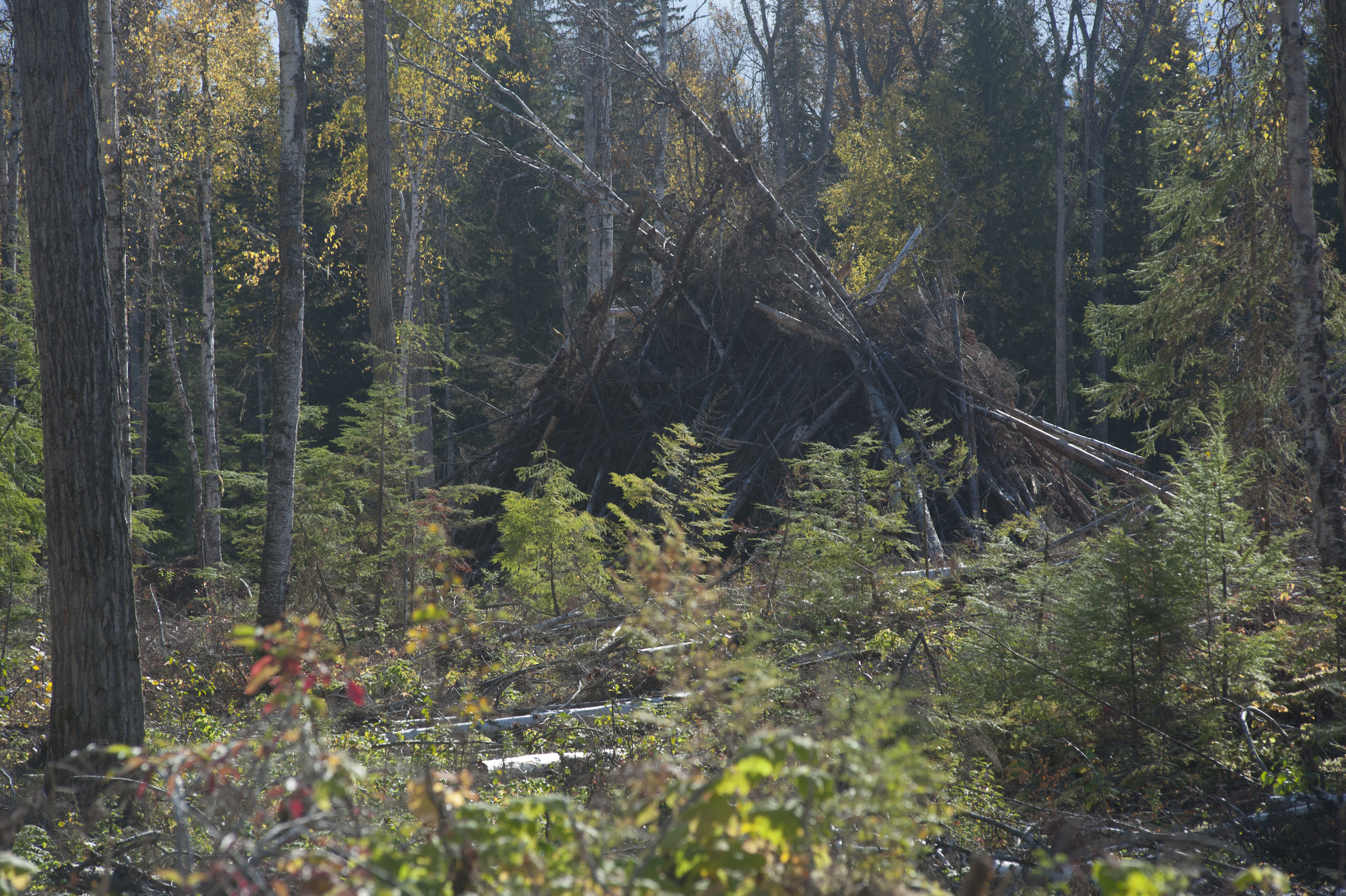
While the piles of waste may be unsettling to some, it’s what you don’t see that really matters. Because the Gitanyow plan was developed with conservation of key values at the fore, the conversation around proposed cutblocks has changed. What used to be a clunky system is now much smoother.
“If it’s in an ecosystem network, it’s just not allowed — it’s 100 per cent retention, so no one would even try to do that anymore,” Marsden says.
As for this block, the loggers left 30 per cent of the forest standing, which Marsden says is in line with biodiversity recommendations by ecologist Karen Price, an advisor to the province on forest management.
While some sections are barren, others look more or less untouched, quiet forested gullies threading through the logged hillside. It’s a far cry from the moonscapes familiar to anyone who has spent time in industrial clearcuts. And, as Marsden says, these blocks aren’t replanted to become de facto tree farms, common practice in many regions across B.C.
“The land-use plan calls for a mix that is representative of the original forest — it’s simple.”
Gitanyow’s example is catching the attention of other Indigenous governments.
“We’ve advised nations from as far away as Manitoba, and nationally, internationally,” Marsden says. “There’s definitely a hunger for this type of plan.”
Christian Ahrenkiel, acting director with the P’egp’ig’lha Council, an Indigenous government created under the guidance of Elders from the P’egp’ig’lha Clan of the St’at’imc Nation, reached out to Marsden last October to learn more about Gitanyow self-governance.
He says the years of work by the Gitanyow Hereditary Chiefs and other Indigenous leaders creating co-governance agreements with settler governments — sometimes referred to as legal pluralism — has paved the way for nations looking to create their own versions of land and water protections.
“When that look of confusion inevitably crosses the faces of the folks on the other side of the table, having concrete examples to say this is an example of this type of lawmaking, this is how it’s been implemented by the Gitanyow and other nations … is really consequential, it saves a lot of breath.”
Ahrenkiel says something Marsden highlighted when she presented to the council and other members of the nation in November stood out for him.
“The sustainability plan, the land-use plan, is representative of the values of each Wilp (house group) being able to sustain itself fairly autonomously. And part of that equation, in this case, is forestry as a really important industry that supports a lot of families.”
He says including logging as a value dispels a stereotype.
“It’s breaking out of this box of what sustenance and sustainability, as far as being able to support yourself as a nation off your territory, looks like.”
Marsden says the Gitanyow Hereditary Chiefs don’t have a communications team, so connections with the likes of Ahrenkiel and the P’egp’ig’lha Council happen organically.
“It’s just the way we are — kind of small and tight knit,” she says, but adds she’s always happy to share and believes it’s important for people to see how this works.
“It makes a huge difference when you’re not fighting every single proposal that comes through.”
Enbridge Gas will face Waterloo Region in a hearing before the Ontario Energy Board to renew an agreement that would allow the company to continue...
Continue reading
For 15 years and counting, my commute from Mississauga to Toronto has been mired by...

For our last weekly newsletter of the year, we wanted to share some highlights from...

The fossil fuel giant says its agreement to build pipelines without paying for the right...